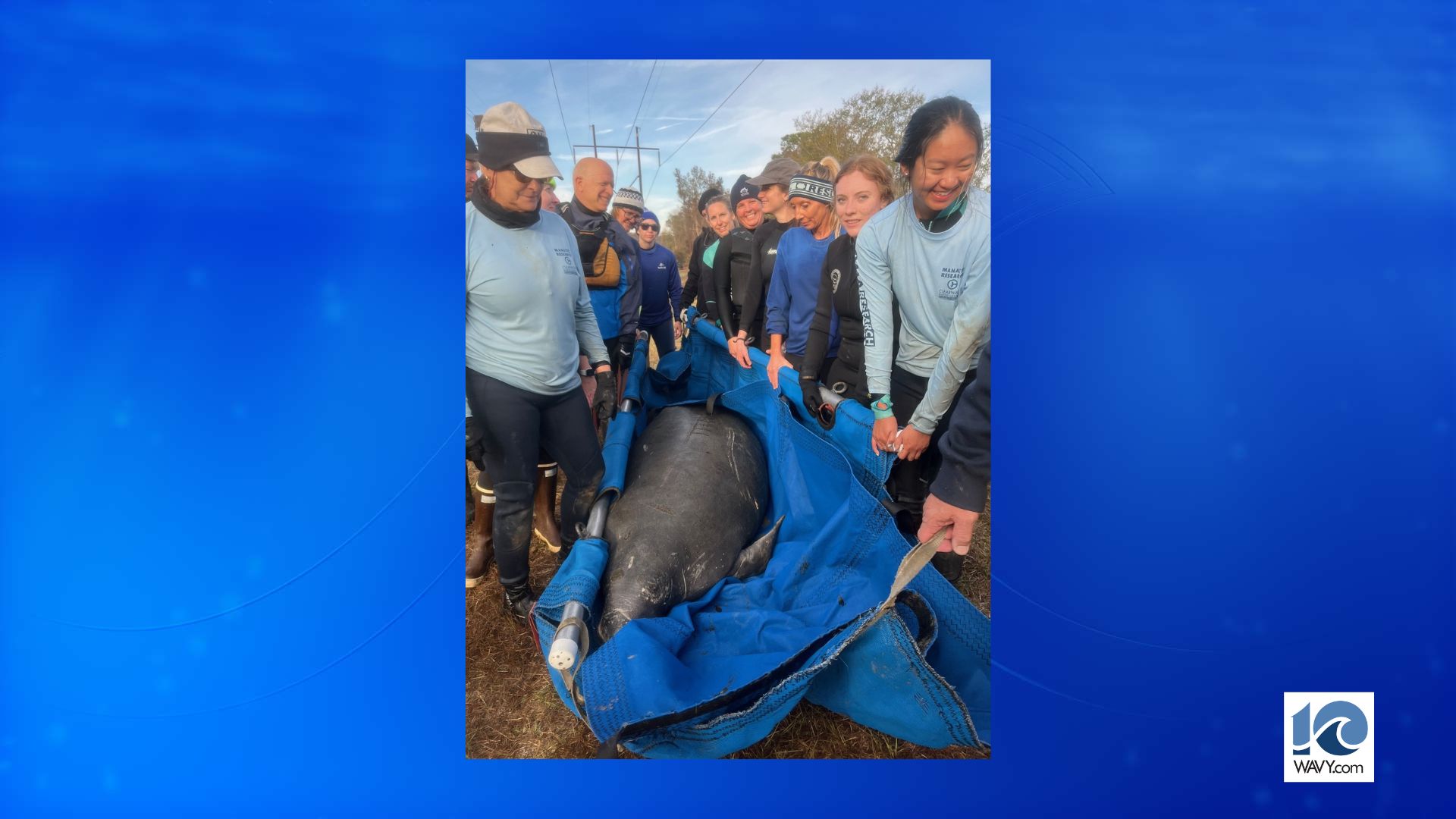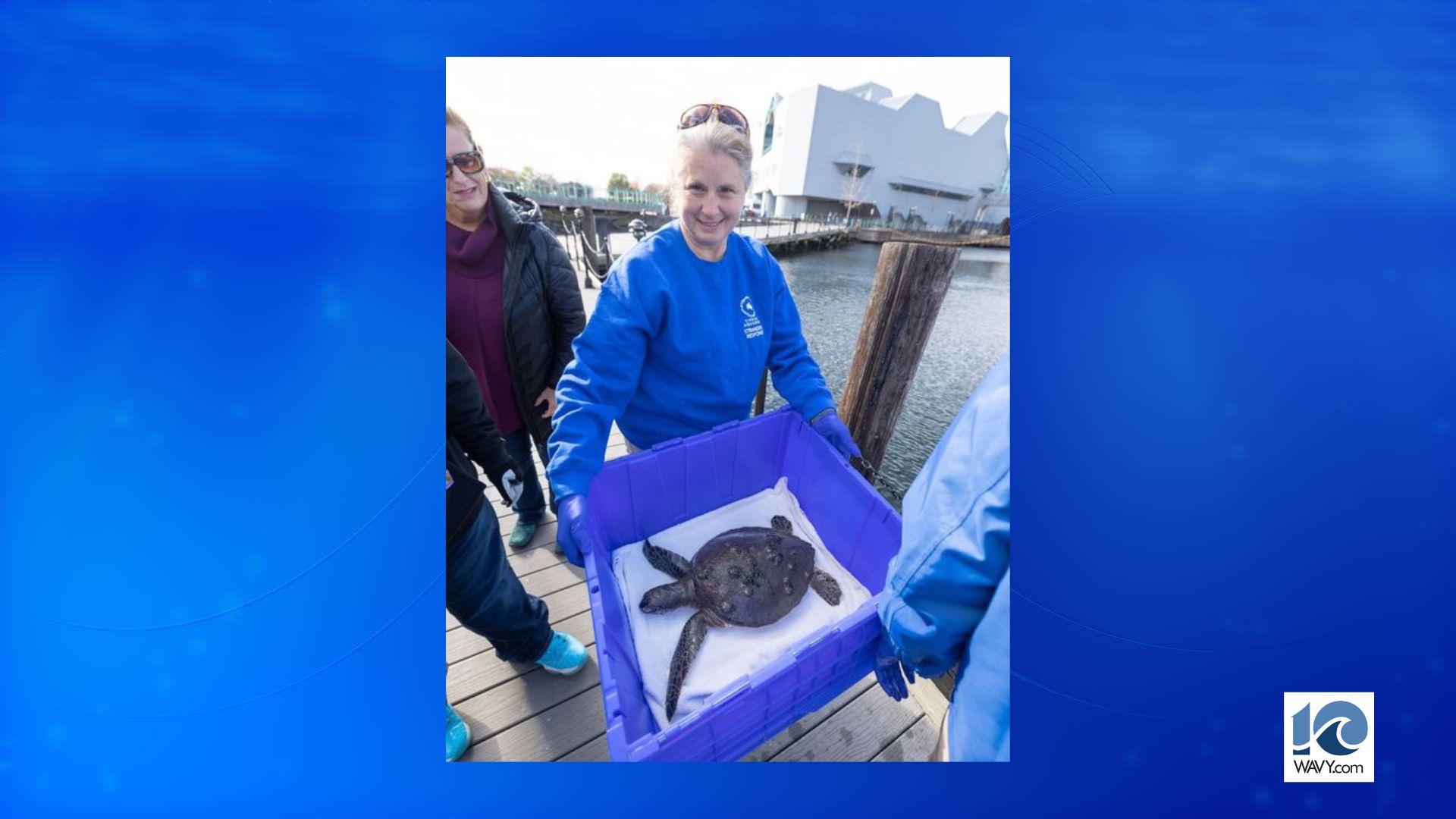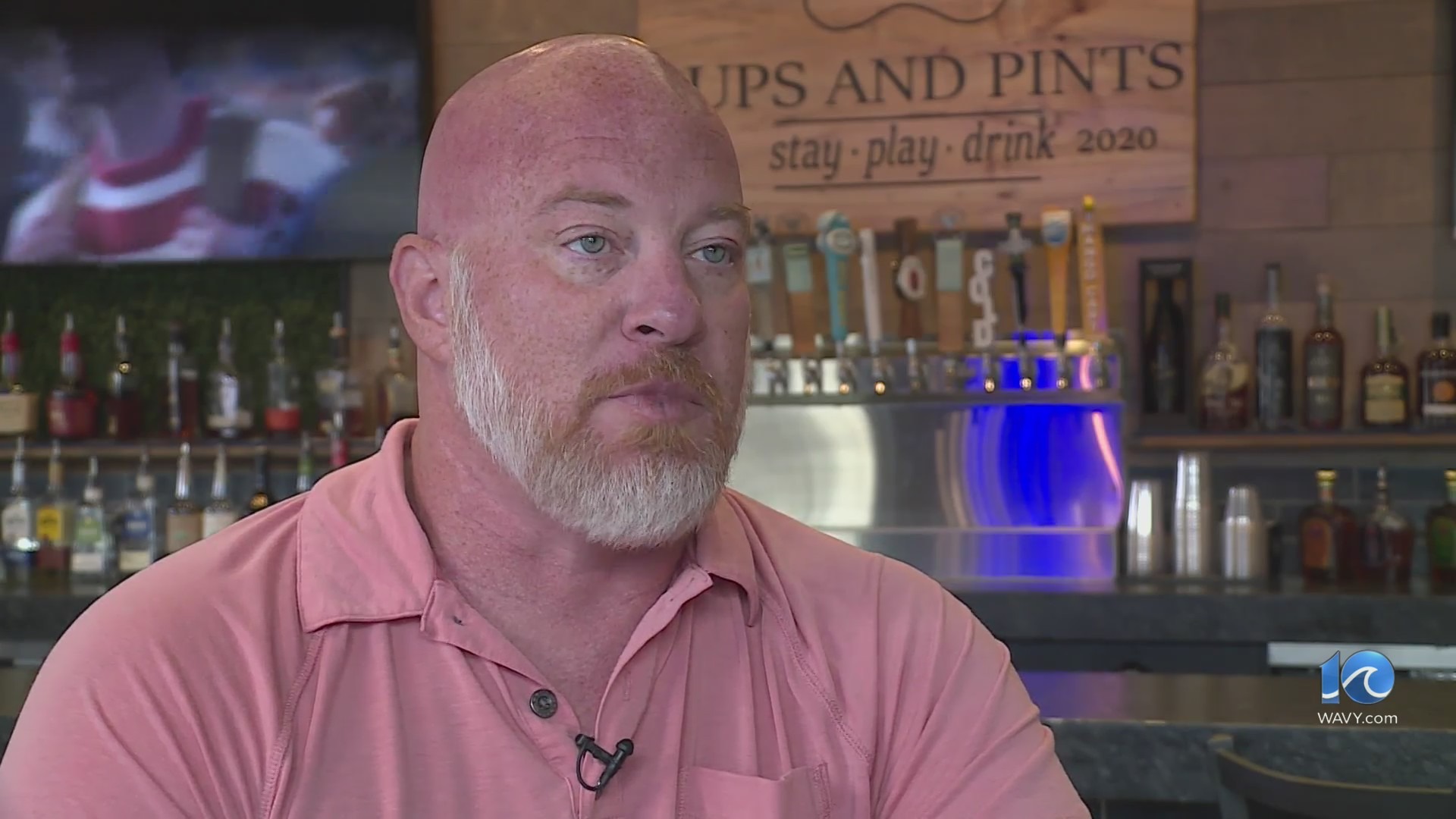CHESAPEAKE, Va. (WAVY) — Tabitha Johnson was devastated when she was diagnosed with cervical cancer at the age of 24.
“I was scared. You hear cancer, and you think of death right away,” Johnson said.
Dr. Javaid Perwaiz diagnosed Johnson with cervical cancer in 2012 — about seven years before federal prosecutors would accuse him of using a host of deceptive means, including the word “cancer,” to coerce women into having unnecessary procedures and surgeries so he could make money off of fraudulent insurance claims.
At the time of the cervical cancer diagnosis, the obstetrician-gynecologist had been Johnson’s doctor for about seven years. Perwaiz performed several surgeries on Johnson during that time to treat conditions like ovarian cysts, fibroids, and endometriosis.
“He removed cysts from my ovaries. He said I had fibroids, and some it was false documentation, where he would say it was a surgery he needed to perform, but my insurance wouldn’t cover that procedure, so he changed it so they would cover it, and he did a totally different procedure,” Johnson said.
Despite the other health issues Johnson was treated for, she was shocked by the cervical cancer diagnosis. Perwaiz told Johnson he needed to perform surgery quickly to prevent the cancer from spreading. He scheduled Johnson for a loop electrosurgical excision procedure (LEEP). Perwaiz explained to Johnson that he would remove the cancerous cells from her cervix during the surgery.
Perwaiz performed the LEEP on Johnson on a Saturday at Chesapeake Regional Medical Center (CRMC). The surgery is a painful memory for Johnson — not only because it was invasive, but because her family didn’t support her decision to have it. They had serious doubts about the cancer diagnosis and Perwaiz’ recommended treatment.
“My family found it really odd,” Johnson said. “They were just like, ‘You don’t have cancer,’ but I’m like, I’m going by what my doctor is telling me. I have cancer.”
Johnson would go on to believe that Perwaiz caught and cured her cervical cancer for almost seven years before the truth was revealed. Her family was right. Johnson never had cancer, and Perwaiz didn’t remove invasive cells during the LEEP. Instead, he removed half of her cervix without Johnson’s consent.
“I did not expect him to take half of my cervix,” Johnson said. “When he explained the procedure to me, he said that he would be removing cancerous cells from my cervix, not cutting half of my cervix off. With me knowing he was going to remove half of my cervix, I would never have consented.”
Johnson discovered that Perwaiz removed half of her cervix in 2018 when she visited a new OB-GYN for a check up. Johnson suffered a series of miscarriages and wanted to know why she was having a hard time maintaining a viable pregnancy. The new doctor told Johnson that her pregnancies were high risk because half of her cervix was removed during the LEEP.
“I was devastated. I cried for a long time,” Johnson said.
Johnson’s trust in Perwaiz was broken, but she still believed the LEEP was a treatment for the cervical cancer he’d diagnosed her with. After his November 2019 arrest, Johnson was afraid she’d also been a victim of his health insurance fraud scheme. She asked her new doctor to review her medical records. That physician confirmed the worst — Johnson never had cervical cancer, and the other procedures Perwaiz performed on her were also unnecessary.
“My doctor told me none of them were necessary,” Johnson said. “The way you look for things he diagnosed me with, he didn’t even do that right.”
Johnson didn’t testify against Perwaiz during his 2020 federal trial, in which a jury convicted him of manipulating women into having unnecessary procedures to make millions off of insurance claims; however, she views herself as one the patients who were irreversibly impacted by his deception.
“It kind of like makes it hard to trust and to confide in doctors, because it’s just like, if I trusted this man for so long, and he made me feel comfortable with him, as if we were friends, and then he violated our trust by doing all these surgeries on me that I didn’t even need,” Johnson said.
Federal prosecutors said that issuing false cancer diagnoses wasn’t the only manipulation tactic Perwaiz used to get women into his operating room. Prosecutors said that Perwaiz often made diagnoses for other health conditions seem extremely urgent and scheduled women for invasive surgeries within days of their appointments with him.
“There were patients named in the indictment, as well as discussed in court papers, where they came in on a Wednesday for the first time to see Dr. Perwaiz, either for a minor ailment or regular check up, and on that Saturday [they would] have a hysterectomy or other invasive surgery,” federal prosecutor Elizabeth Yusi said.
Dayna Chezem is one of those women. She was named in the criminal indictment and testified against Perwaiz during the jury trial. She was also the first patient 10 On Your Side interviewed during our year-long investigation into the OB-GYN.
Chezem saw Perwaiz for the first time in 2013. She went to him for a checkup because she was suffering from abdominal cramps. She found herself in an operating room at CRMC two days after that first appointment.
“He had given me a check up, and out of nowhere told me I had to have my ovaries removed ASAP,” Chezem said. “I’d asked him if there was enough time for me to get my daughter off of work so she could take me to the hospital to have this done. He said, ‘Yea, but you have to have this done as soon as possible, so I’ll give you until Saturday.'”
The procedure Chezem consented to is called an oophorectomy — the surgical removal of one or both ovaries. But, that’s not the procedure Chezem had. Instead, Perwaiz performed a hysterectomy on Chezem without her consent.
Perwaiz visited Chezem in a hospital recovery room after the surgery. He informed her that instead of removing both of her ovaries, he only removed one. Then he told her he also removed her uterus, which was not part of his original treatment plan.
“He took something I did not give him permission to take,” she added.
Perwaiz didn’t explain why he performed the hysterectomy, and Chezem didn’t push him for more information because he was a doctor. She saw Perwaiz one more time after the surgery for a follow up exam. Ultimately, Chezem decided that she wasn’t comfortable having Perwaiz as her OB-GYN.
Chezem’s medical records were used as evidence against Perwaiz during the jury trial. Prosecutors showed that Perwaiz falsified her medical records to justify the hysterectomy. He listed symptoms that Chezem didn’t experience and falsely reported that she requested to have her uterus removed.
Chezem spent five years believing that she only had one ovary until she went to a new OB-GYN for an ovarian cancer screening after her sister was diagnosed with the disease. That physician made a surprising discovery — Perwaiz never removed either of Chezem’s ovaries during the 2013 surgery.
“I was really shocked,” Chezem said.
After Perwaiz was convicted of healthcare fraud by a federal jury, Chezem filed a $10 million medical malpractice lawsuit against the OB-GYN and CRMC. That lawsuit is currently active in Chesapeake Circuit Court.
Long-time patient Shannon Cohen said she nearly had what she believes would have been an unnecessary hysterectomy just a year-and-a-half before Perwaiz was arrested. Cohen saw Perwaiz for more than 20 years, and he performed several procedures and surgeries on her, including cystectomies, hysteroscopies, polyp removals, and dilation curettages.
“All of this was just a yearly occurrence, which I just thought my body was used to,” Cohen said.
Cohen trusted Perwaiz implicitly. She had every procedure and surgery he recommended to her until she canceled a scheduled hysterectomy that he wanted to perform on her when she was only 42 years old.
“He said I’m not going to have any more children, that it would decrease my chances of ovarian cancer, that I was a prime candidate for one,” Cohen said.
“I had never had an abnormal examination in the last couple of years in pushing for this hysterectomy. It was brought up that absolutely it decreases your chances of ovarian cancer,” Cohen added. “I don’t have a history of cancer in my family, and I didn’t have even that concern as a 42-year-old woman that’s healthy. That wasn’t a concern of mine at all.”
Perwaiz first recommended the hysterectomy a few years before Cohen decided to schedule it. He pushed for the surgery during her routine examinations, but she told him repeatedly that she didn’t believe she needed to have a hysterectomy. Eventually she decided to follow his recommendation, but canceled the scheduled surgery two days before she was supposed to go to the hospital. Her gut told her that having the hysterectomy would not be the right decision.
Perwaiz called Cohen at home the day she canceled the hysterectomy. She said it was the first time in her relationship with him as a patient that she ever detected any disapproval or aggression.
“Why did I want to do this? We talked about this. You need this surgery, Shannon,” Perwaiz said to Cohen, according to her recollection of the conversation.
“‘And I said, ‘I’m just not ready. I’m not ready. When I feel like I’m ready, I will absolutely schedule it,'” Cohen said. But he definitely had a tone of detest in his voice, which was kind of alarming.”
Most of the stories 10 On Your Side investigators heard during during federal court testimony and from patients we interviewed show a remarkably similar pattern. Healthy women went to Perwaiz for routine exams, but found themselves in the operating room. We’ll tell you more about the exams that Perwaiz used to justify those surgeries in Chapter 6 of “The Patients v. Perwaiz,” which is scheduled to air on March 11.
The U.S. Attorney’s office is accepting victim impact statements for consideration at Perwaiz’ sentencing from anyone who believes they were hurt by the OB-GYN’s criminal actions. To learn more about how to submit a victim impact statement, click here.





































